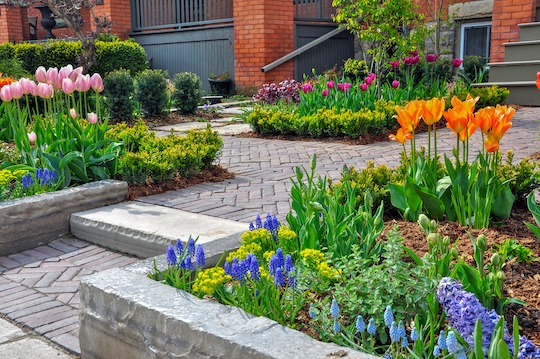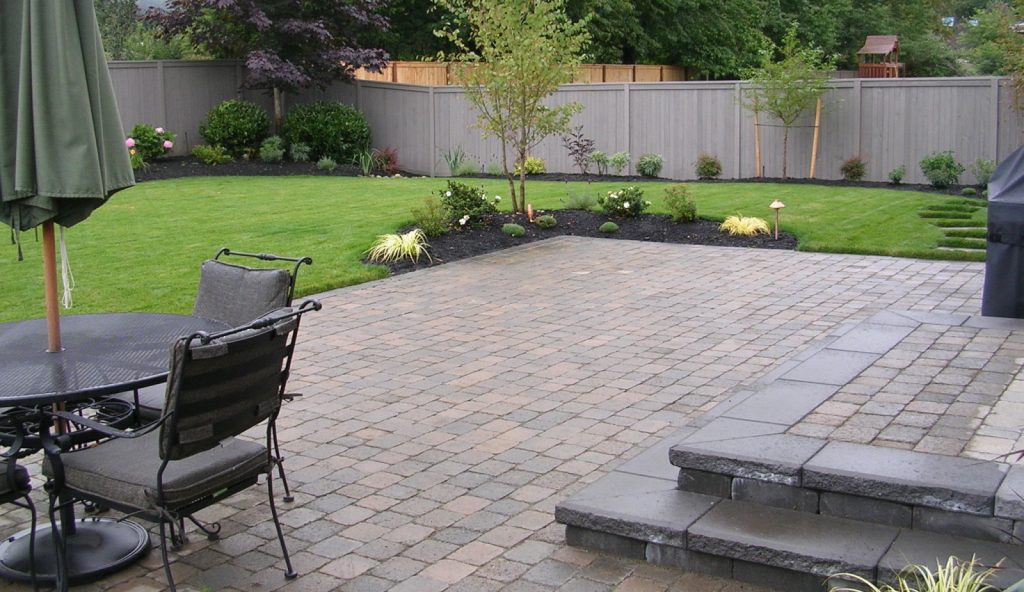Outdoor spaces are versatile and dynamic. Whether designing it yourself or working with a professional, first you need to identify what you want it to do.
Something the 2020-2021 pandemic taught us is outdoor space, whether for businesses or residences, can be very important amenities on property. It’s brought about a great deal of activity in the landscape design business – to the point where casual discussion of “hardscape” and “landscape” (or “softscape”) is a lot more common than it used to be.
Which then leads to this question: how to strike the right balance between hardscape (things that are man-made, such as asphalt, pavement, fencing, pools, water features, etc.) and the natural plants and landforms that define the softer landscape. Determining this balance has led to big business for landscape consultants and asphalt contractors alike.
To answer that question, the property owner needs to ask themselves and those around them: What is the program? What do we plan to do with this space, and what should it do for us? Depending on the answer to these questions, that hard-soft scape balance can vary significantly.
What should your hardscape and softer landscape do for you?
For example, the homeowner with small children typically will want play spaces for them, suggesting a lawn and perhaps playground structures. Someone who wants to grow vegetables might opt for space and materials dedicated to that – perhaps along with an outdoor kitchen and dining areas with a fire pit nearby. If there is a pool in the plans, positioning it where the sun shines is a determinative factor.
For a commercial business property, mobility allowing for handicap access must be worked into the plan, as well as parking and perhaps employee amenities, such as lunch and other break areas and furniture. A commercial asphalt contractor should be consulted.
Something else to consider is the “biophilia effects” – where nature has a positive effect on the humans within it – on internal occupants of the home or business. If windows face a garden, they can have a health-promoting effect and those who look at it. The trickle of water in a fountain has a soothing effect, as might watching fish in a koi pond. Consider also the four seasons of what is in that view – winter need not be a barren landscape with a good design.
When the program is identified it clarifies where the walkways, gathering areas, and pool surrounds need to be built. Perhaps fencing is advisable, either for safety and security, or to keep deer from eating your expensive plants. From there it’s a matter of picking out the materials that fit the program, as well as what melds with the buildings around it – and what will fit the budget.
Plants are awesome, but they get bigger
When choosing plant material, the possibilities are virtually endless – and complicated. Factors to consider are where you want to create shade, privacy, color, perhaps even habitat for birds (or not).
Don’t forget: plants grow. So, if your budget allows, hire a landscape or garden designer, or for a complete hardscape-softscape plan, a landscape architect. A professional will have deep knowledge on how those living things will mature with time.
Understand that upon installation the landscape is in its most raw form, particularly if your plants are in smaller stages of growth. Your hardscape will likely stay as it is for a long time – but as the trees, bushes, grasses, and flowers grow, you’ll have something new to look at every day.
With luck, you’ll need to trim things back – which are nice problems to have.


